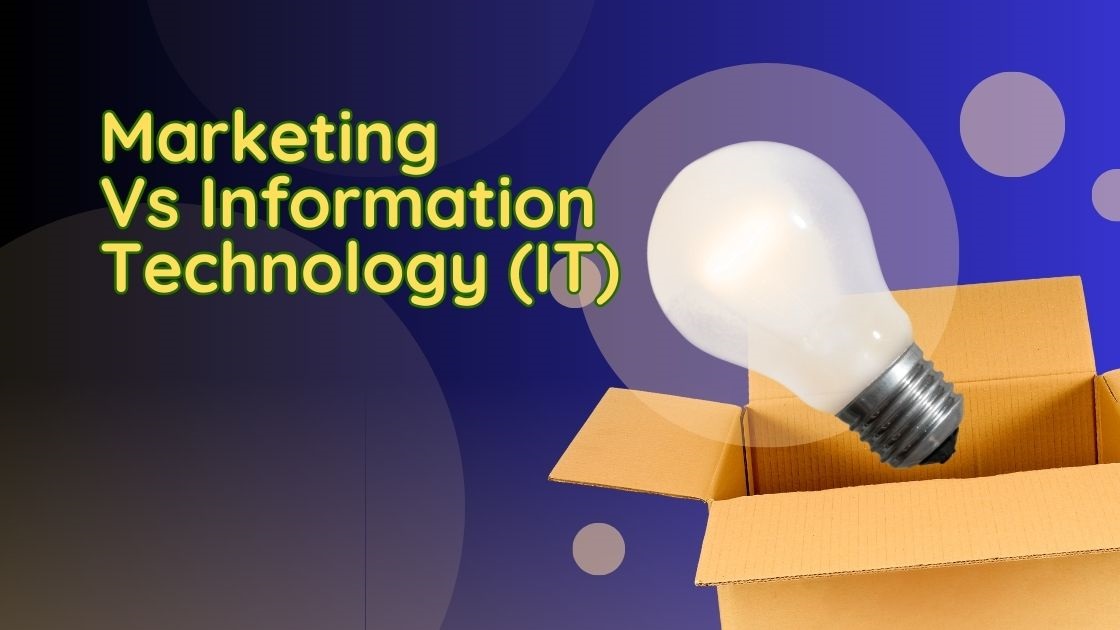Northrop Grumman, a leading player in the defense industry, faces formidable competition from several key competitors in 2024. These competitors include industry giants such as Lockheed Martin, Boeing, Teledyne Technologies, L3Harris Technologies, TransDigm Group, General Dynamics, HEICO, Leidos, RTX, and Leonardo DRS.
As part of the aerospace sector, these companies play a significant role in shaping the landscape of the industry. With advanced technologies and innovative solutions, they continuously drive the defense industry forward.
In this article, we will explore the top competitors and alternatives to Northrop Grumman, analyzing their strengths, weaknesses, and overall competitiveness. By understanding the capabilities of these companies, we can gain valuable insights into the dynamics of the defense industry in 2024.
Teledyne Technologies vs. Northrop Grumman
Teledyne Technologies and Northrop Grumman are two major players in the aerospace industry. While both companies compete in the defense sector, they have notable differences in certain areas.
Teledyne Technologies stands out in terms of dividends, media sentiment, institutional ownership, risk, earnings, profitability, community ranking, analyst recommendations, and valuation. These factors contribute to the company’s overall competitiveness and solid position in the market.
On the other hand, Northrop Grumman is also a formidable competitor, known for its comprehensive portfolio of defense products and services. The company has a strong presence in the industry, with a focus on innovative solutions and technological advancements.
Despite their divergent strengths, both Teledyne Technologies and Northrop Grumman continue to vie for market share and contracts in the defense industry. Their competition drives innovation, fosters technological advancements, and ensures the growth and sustainability of the aerospace sector as a whole.
Ultimately, the dynamic landscape of the defense industry demands continuous adaptation and improvement from both Teledyne Technologies and Northrop Grumman, as they strive to meet the evolving needs of military and government customers around the world.
Lockheed Martin vs. Northrop Grumman
Lockheed Martin and Northrop Grumman are prominent players in the aerospace sector and fierce competitors in the defense industry. A detailed analysis of their strengths and weaknesses reveals the areas where each company excels, ultimately influencing their overall competitiveness.
When comparing Lockheed Martin and Northrop Grumman, market sentiment plays a crucial role. Both companies have established a strong reputation within the industry, garnering positive sentiment from investors, analysts, and the public.
Financial performance is another key aspect to consider when evaluating the competitiveness of these industry leaders. Both Lockheed Martin and Northrop Grumman have consistently delivered solid financial results, showcasing their stability and ability to execute projects efficiently.
Analyst recommendations provide valuable insights into the market’s perception of each company. With analysts closely tracking the aerospace and defense sectors, their recommendations can significantly influence investor confidence and market sentiment towards Lockheed Martin and Northrop Grumman.
Moreover, strengths in specific areas can give each company a competitive edge. While Lockheed Martin has been lauded for its advanced technological capabilities and cutting-edge innovations, Northrop Grumman has demonstrated expertise in specialized defense systems and its ability to deliver tailored solutions for complex challenges.
To better understand the competitive landscape between Lockheed Martin and Northrop Grumman, it is important to consider their respective track records in securing high-profile contracts and partnerships. Both companies have a proven ability to win significant projects, further solidifying their position as leaders in the industry.
Image:
In conclusion, the rivalry between Lockheed Martin and Northrop Grumman drives innovation and pushes the boundaries of aerospace and defense technologies. These companies, with their unique strengths and industry expertise, play a crucial role in shaping the competitive landscape of the defense industry in 2024.
Boeing vs. Northrop Grumman
When it comes to the defense industry, Boeing is undoubtedly a well-known name that goes head-to-head with Northrop Grumman. These two industry giants often find themselves competing for lucrative contracts and high-profile projects, driving innovation and pushing the boundaries of the aerospace sector.
Boeing, a global leader in aerospace and defense, has a long-standing reputation for its cutting-edge technology, engineering expertise, and commitment to excellence. The company’s extensive portfolio encompasses a broad range of products and services, including military aircraft, satellites, missiles, and defense systems.
Northrop Grumman, on the other hand, is no stranger to the competitive landscape of the defense industry. Renowned for its innovation and advanced capabilities, Northrop Grumman specializes in aerospace systems, autonomous systems, cyber solutions, and mission-centric solutions.
In evaluating the competitiveness between Boeing and Northrop Grumman, several key factors come into play. Revenue, market share, and industry impact are crucial indicators that can shed light on their relative standing in the market. Both companies have a vast customer base and a strong presence in the defense industry, making it imperative for them to continually demonstrate their strengths and capabilities.
Moreover, the ongoing pursuit of technological advancements and strategic partnerships is an essential driving force behind each company’s competitive edge. By investing in research and development, Boeing and Northrop Grumman strive to stay at the forefront of innovation, ensuring they are well-positioned to meet the evolving needs of their customers and the changing landscape of the defense sector.
In summary, the rivalry between Boeing and Northrop Grumman represents a compelling competition within the defense industry. While both companies offer unique strengths and capabilities, their shared commitment to innovation and excellence fuels the drive for advancement in the aerospace sector. As the battle for contracts and projects intensifies, these industry leaders continue to push the boundaries of what is possible, ultimately benefiting not only themselves but also the entire defense industry.
General Dynamics vs. Northrop Grumman
General Dynamics and Northrop Grumman are both prominent companies in the defense industry, each with its unique strengths and contributions. When assessing their competitive landscape, it is essential to consider factors such as revenue, market influence, and technological capabilities.
General Dynamics has established itself as a key player in the defense industry, known for its impressive financial performance and revenue growth. The company’s ability to generate substantial revenue reflects its strong market position and customer trust.
Northrop Grumman, on the other hand, has its own set of strengths that contribute to its competitiveness. The company has made significant technological advancements and has a strong presence in critical areas of defense, such as aerospace and military technology.
Furthermore, both General Dynamics and Northrop Grumman have a history of delivering innovative solutions that meet the ever-evolving needs of their customers. This commitment to innovation allows them to stay ahead of the competition and maintain their relevance in the defense industry.
Understanding the capabilities and strengths of General Dynamics and Northrop Grumman provides valuable insights into the competitive landscape of the defense industry. As these companies continue to push the boundaries of technology and strive for excellence, their rivalry drives advancements and benefits the industry as a whole.
BAE Systems vs. Northrop Grumman
BAE Systems and Northrop Grumman are fierce competitors in the defense industry, operating in various areas such as aerospace and military technology. These companies are driven to excel in their respective fields, constantly pushing the boundaries of innovation and delivering cutting-edge solutions to their clients.
BAE Systems, headquartered in London, is a global leader in defense and security. With a strong presence in the United States and a wide range of products and services, BAE Systems has established itself as a formidable force in the industry. The company’s expertise spans across land, sea, and air domains, offering customers integrated defense systems, advanced electronics, and cyber solutions.
On the other hand, Northrop Grumman, a U.S.-based company, boasts an impressive track record of delivering advanced technology systems and solutions for a range of defense applications. Their expertise in aerospace systems, autonomous systems, cyber solutions, and mission-centric solutions has positioned them as a key player in the industry.
When comparing BAE Systems and Northrop Grumman, factors such as market presence, financial performance, and industry reputation play a crucial role in assessing their competitiveness.
BAE Systems has a strong global market presence, as they operate in several countries and work closely with multiple international customers. Their ability to establish strategic partnerships and deliver tailored solutions has contributed to their significant market share. Additionally, BAE Systems has demonstrated financial resilience and steady growth, which further cement their position as a formidable competitor.
Similarly, Northrop Grumman has built a strong reputation within the defense community. Their commitment to excellence, technical expertise, and delivery of reliable solutions have earned them a loyal customer base. With a focus on financial discipline and continuous investment in research and development, Northrop Grumman remains well-positioned to compete in the dynamic defense industry.
Innovative Solutions and Technical Capabilities
Both BAE Systems and Northrop Grumman have made significant contributions to the defense industry through their innovative solutions and technical capabilities. BAE Systems has been at the forefront of delivering cutting-edge technologies, incorporating artificial intelligence, cybersecurity, and advanced materials into their product offerings. Similarly, Northrop Grumman’s advancements in autonomous systems, space technology, and information warfare have positioned them as leaders in the field.
As the defense industry continues to evolve, BAE Systems and Northrop Grumman are focused on addressing emerging challenges, such as cybersecurity threats and the integration of artificial intelligence. By leveraging their technical expertise and investing in research and development, both companies are well-prepared to meet the evolving needs of their customers.
Market Competition and Collaboration
BAE Systems and Northrop Grumman often find themselves competing for government contracts and collaborative opportunities within the defense industry. This healthy competition drives innovation and pushes both companies to strive for excellence. By continuously improving their offerings and demonstrating their capabilities, BAE Systems and Northrop Grumman aim to secure valuable contracts and partnerships.
In conclusion, BAE Systems and Northrop Grumman are prominent competitors in the defense industry. Both companies possess expertise in various areas, driving innovation and contributing to the advancement of aerospace and military technology. As they continue to evolve and tackle emerging challenges, BAE Systems and Northrop Grumman remain vital players in shaping the competitive landscape of the defense industry.
Airbus vs. Northrop Grumman
Airbus, a European aerospace giant, is another significant competitor of Northrop Grumman. While Northrop Grumman and Airbus operate in different regions, they still vie for market share and contracts globally. Factors such as customer base, product portfolio, and industry partnerships contribute to their competitiveness.
Both Airbus and Northrop Grumman have a wide range of products and solutions that cater to various sectors of the aerospace industry. Airbus is known for its commercial aircraft, helicopters, and defense systems, while Northrop Grumman specializes in advanced technology systems, including military aircraft, space systems, and electronic warfare.
When it comes to customer base, Airbus serves customers around the world, including airlines, governments, and defense organizations. Its extensive network and strong relationships with customers give Airbus a competitive edge in securing contracts and expanding its market presence globally.
Northrop Grumman, on the other hand, has a strong customer base in the United States, particularly within the defense sector. Its long-standing partnerships with the U.S. Department of Defense and other government agencies position Northrop Grumman as a trusted supplier of advanced defense technologies.
Product Portfolio
As mentioned earlier, Airbus and Northrop Grumman offer a diverse range of products and solutions. Airbus is renowned for its commercial aircraft, such as the A320, A350, and A380, which are widely used by airlines worldwide. Additionally, Airbus manufactures helicopters for both civilian and military applications, including the H135 and H225 models. In the defense sector, Airbus provides military aircraft, such as the A400M transport plane and Eurofighter Typhoon fighter jet, as well as defense systems, including missiles and radars.
Northrop Grumman, on the other hand, focuses on advanced technology systems. The company’s product portfolio includes military aircraft, such as the B-2 Spirit stealth bomber and MQ-4C Triton unmanned aircraft system. Northrop Grumman is also a leading provider of space systems, including satellites, space-based sensors, and communications systems. With its expertise in electronic warfare, the company delivers cutting-edge solutions to enhance military capabilities.
Industry Partnerships
Both Airbus and Northrop Grumman collaborate with various industry partners to leverage their respective strengths and drive innovation. Airbus has strategic partnerships with renowned aerospace and defense companies, including Safran, Dassault Aviation, and Thales. These collaborations enable Airbus to tap into additional expertise and resources, enhancing its competitiveness in the market.
Northrop Grumman also forms partnerships with key players in the industry to foster innovation and address customer needs. The company works closely with companies like Lockheed Martin, Boeing, and Raytheon to develop integrated defense solutions and provide comprehensive capabilities for defense customers.
Both Airbus and Northrop Grumman are continuously striving to stay ahead in the highly competitive aerospace industry. While they may operate in different regions and have distinct strengths, their shared goal of delivering advanced technologies and solutions drives their competitiveness in the global market.
Thales Group vs. Northrop Grumman
Thales Group and Northrop Grumman are both reputable multinational companies in the defense and aerospace industry. As key players, they offer a wide range of innovative solutions across various areas of defense, catering to the evolving needs of their clients.
Thales Group’s market presence extends globally, with a solid foothold in Europe, the Middle East, and Africa. Their expertise lies in areas such as avionics, air defense systems, and cybersecurity. With a focus on technological advancements, Thales Group continuously pushes the boundaries of innovation, ensuring they stay ahead in the competitive landscape.
On the other hand, Northrop Grumman is a prominent player in the defense industry, primarily operating in the United States. They specialize in advanced technology systems and services, including aerospace systems, autonomous systems, and mission solutions. Northrop Grumman’s commitment to delivering cutting-edge solutions has positioned them as a leader in the market.
Assessing customer satisfaction is paramount when determining the competitiveness of Thales Group and Northrop Grumman. Both companies have a strong track record of delivering high-quality products and services, building trust and long-lasting relationships with their clients.
Technological Advancements and Collaborations
In an industry where technological advancements are crucial, Thales Group and Northrop Grumman continuously invest in research and development to stay at the forefront of innovation. These companies actively collaborate with academic institutions, research organizations, and industry partners to leverage collective knowledge and expertise, fostering groundbreaking breakthroughs.
Thales Group’s collaborations span across various domains, enabling them to create cutting-edge solutions in emerging fields such as artificial intelligence, cloud computing, and satellite communication. Their close partnerships allow them to access the latest technologies and incorporate them into their offerings, ensuring they remain competitive.
Similarly, Northrop Grumman engages in strategic collaborations with leading institutions and partners in the defense industry. By combining forces, they accelerate the development of advanced technologies, such as next-generation aircraft systems and cybersecurity solutions. These collaborations enable them to offer comprehensive and integrated solutions to their clients, enhancing their competitiveness.
Global Outreach and Market Expansion
Both Thales Group and Northrop Grumman recognize the importance of global outreach and market expansion. Thales Group has a strong presence in Europe, the Middle East, and Africa, with a robust network of subsidiaries and partners. This allows them to tap into diverse markets and address the unique needs of different regions.
Similarly, Northrop Grumman has a significant presence in the United States, where they have established themselves as a trusted provider of defense systems and services. They also actively pursue opportunities to expand their market reach globally, forging partnerships and collaborations in key regions around the world.
As aerospace and defense markets continue to evolve, Thales Group and Northrop Grumman remain focused on adapting their strategies to the changing landscape. By leveraging their global presence and fostering strong relationships with governments and industry stakeholders, these companies are well-positioned to seize new opportunities and overcome challenges.
Leonardo vs. Northrop Grumman
Leonardo, an Italian defense company, is a global competitor of Northrop Grumman. Despite operating in different regions, these companies often find themselves going head-to-head for contracts and collaborations, contributing to the ever-evolving landscape of the defense industry. When analyzing their relative competitiveness, factors such as financial performance, technological capabilities, and industry reputation come into play.
Leonardo, with its strong presence in the international defense market, creates a formidable challenge for Northrop Grumman. Both companies have established themselves as leaders in the industry and are known for their cutting-edge technologies and innovative solutions. Through strategic partnerships, extensive research and development initiatives, and a customer-centric approach, Leonardo continues to demonstrate its commitment to staying at the forefront of defense technology.
One aspect that places Leonardo in direct competition with Northrop Grumman is their focus on developing advanced aerospace systems and solutions. Leonardo’s expertise in aviation, space, and defense technologies enables it to offer a comprehensive portfolio of products and services. By leveraging its global reach and extensive industry experience, Leonardo positions itself as a credible alternative to Northrop Grumman, enticing customers looking for reliable, technologically advanced solutions.
Financial performance is another key area where Leonardo and Northrop Grumman are closely scrutinized. Investors and stakeholders pay close attention to revenue growth, profit margins, and overall financial stability when assessing a company’s competitiveness. Leonardo has consistently demonstrated its financial strength, with steady revenue growth and robust profit margins, bolstering its standing as a formidable competitor within the defense industry.
The technological capabilities of both Leonardo and Northrop Grumman are crucial factors that determine their competitiveness. These companies invest heavily in research and development, focusing on innovation and emerging technologies to stay ahead. Leonardo, with its extensive expertise in various areas of defense and security, including aerospace, electronics, and cyber solutions, competes with Northrop Grumman on technical merit and operational effectiveness.
Both Leonardo and Northrop Grumman have established a strong industry reputation based on their track records of delivering high-quality, reliable solutions to their customers. Leonardo’s commitment to quality and customer satisfaction, coupled with its renowned expertise and technological prowess, solidifies its position as a prominent competitor in the defense industry. Northrop Grumman, with its long-standing tradition of excellence and reliability, represents a tough adversary for Leonardo, further driving the competitive landscape in this dynamic market.
The Global Competition
- Financial performance
- Technological capabilities
- Industry reputation
- Product portfolio and innovation
- Customer satisfaction and partnerships
In conclusion, the competition between Leonardo and Northrop Grumman is fierce, as both companies vie for dominance in the international defense market. With their respective strengths in technology, financial stability, and industry recognition, Leonardo and Northrop Grumman continue to shape the future of the defense industry through their innovative solutions and unwavering commitment to excellence.
Honeywell vs. Northrop Grumman
Honeywell and Northrop Grumman are two prominent players in the aerospace and defense industries. While both companies operate in similar sectors, they each bring their own unique strengths to the table. Evaluating factors such as market position, innovation, and customer satisfaction can provide insights into their level of competitiveness.
When it comes to market position, Honeywell has established a strong presence globally. The company’s diverse portfolio of products and services allows them to cater to a wide range of customer needs. Northrop Grumman, on the other hand, is known for its cutting-edge technologies and expertise in advanced defense systems. Their focus on innovation has helped them secure significant contracts in the defense sector.
Customer satisfaction is an essential metric in determining a company’s competitiveness. Honeywell’s commitment to delivering high-quality products and providing excellent customer support has earned them a strong reputation in the industry. Similarly, Northrop Grumman’s dedication to meeting customer requirements and delivering innovative solutions has garnered them a loyal customer base.
In terms of innovation, both Honeywell and Northrop Grumman invest heavily in research and development to stay ahead of the curve. Honeywell’s focus on technological advancements across various industries, including aerospace, positions them as a leader in innovation. Northrop Grumman’s expertise in defense technology and their ability to develop cutting-edge systems further solidify their position as an industry leader.
In summary, Honeywell and Northrop Grumman are formidable competitors in the aerospace and defense sectors. Honeywell’s strong market position, commitment to customer satisfaction, and focus on innovation, coupled with Northrop Grumman’s advanced defense systems, technological expertise, and innovative solutions, make for a dynamic competition between the two companies.
Conclusion
The defense industry landscape in 2024 is highly competitive, with Northrop Grumman facing tough competition from top players such as Lockheed Martin, Boeing, Teledyne Technologies, General Dynamics, BAE Systems, Airbus, Thales Group, Leonardo, and Honeywell. These companies play a significant role in shaping the industry, driving innovation and advancement in aerospace and defense technologies.
In order to maintain a competitive edge in this dynamic market, Northrop Grumman must continue to innovate and capitalize on its strengths. By focusing on research and development, strategic partnerships, and exceptional customer service, Northrop Grumman can position itself as a leader in the field, further solidifying its position amidst its competitors.
The defense industry is constantly evolving, and Northrop Grumman’s ability to adapt and stay ahead of the curve will be crucial in ensuring its success. By leveraging its expertise, technological capabilities, and deep understanding of customer needs, Northrop Grumman can navigate the ever-changing landscape effectively and secure its position as a key player in the defense industry.






